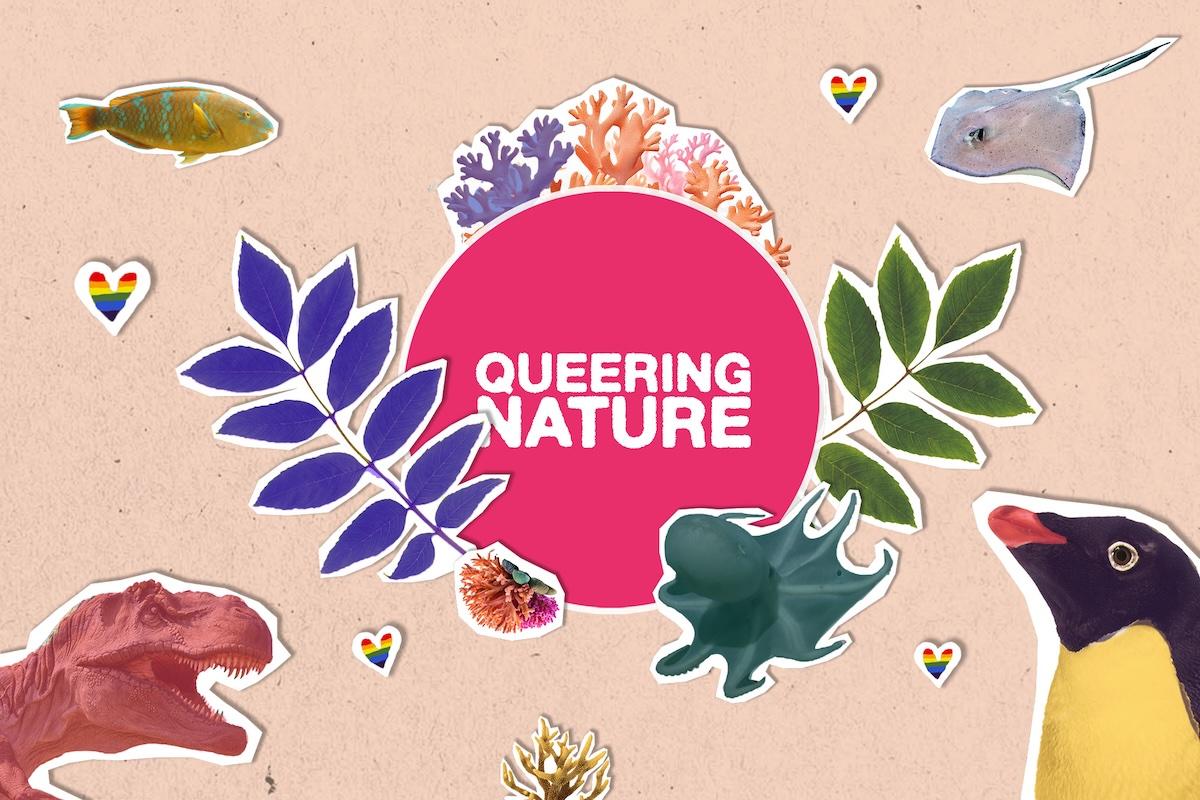A new audio guide, which is available free of charge to anyone interested via the website of the Berlin Natural History Museum, focuses on the queer-historical view of nature and science. This guided tour focuses on a queer-historical perspective on nature and science: How is nature sexualised? What does colonialism have to do with botany and gender in plants? How do scientists determine the sex of a dinosaur fossil? What do octopuses and penguins reveal about society’s sexual morality? What and whose knowledge is (re)presented in the Naturkundemuseum - and what remains unsaid?
The new audio guide offers something of interest not just to people who sympathise with these discourses of queernees, but also to anyone with an interest in biology. The guide leads those interested to eight stations in the exhibition:
- Sexuality: octopuses & penguins: A small octopus hides amongst the animals of the biodiversity wall and will help us address a blank spot in the museum: the issue of sexuality. While sexuality is mentioned in the exhibition, its true diversity remains hidden.
- Botany, sexualisation and colonialism: Linnaeus: The display behind the biodiversity wall looks at the discovery and naming of nature. Here we examine the context of these practices and their connections to colonial history and the sexualization of plants.
- Mutation: Five glass jars contain conserved fetuses and illustrate the topic of mutation. The text accompanying the display talks of trisomy, Down syndrome and Klinefelter syndrome. Here we thematize the way in which the Naturkundemuseum addresses intersex and disability.
- Sex determination: T-rex: How do you determine the sex of an extinct dino? In front of the T-rex we look at the ambivalences of sex determination and the societal relations that govern it.
- Short note on the wet collection: Here we learn something about Charlotte, the stingray, and her wonderous conception as well as about parthenogenesis.
- The queerness of bears: Knut: In this station you will learn about gender and sexual diversity among polar and other bears and about their symbolic meaning for indigenous and queer communities.
- Families: hippos: We are facing a nuclear family of hippos: two parents and a calf. The only problem: Hippos don’t live like that. They are loners although we often see them in groups. Here we look at different ways of living together.
- The fluidity of sex: parrotfish: The parrotfish is used to live as different genders throughout its life. Facing the colourful coral reef we examine its diverse and ever-changing gender and explore the coral reef as a site where transitions are part of everyday life.
The audio guide is now available free of charge to all interested parties via the museum's website (link).
